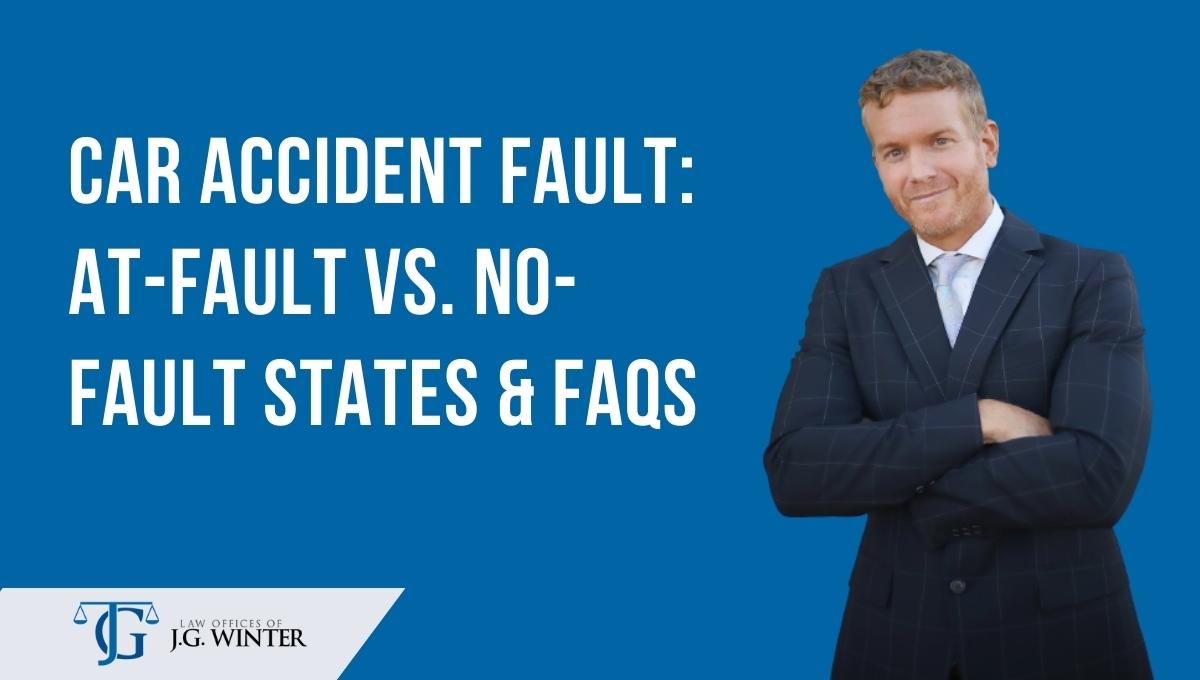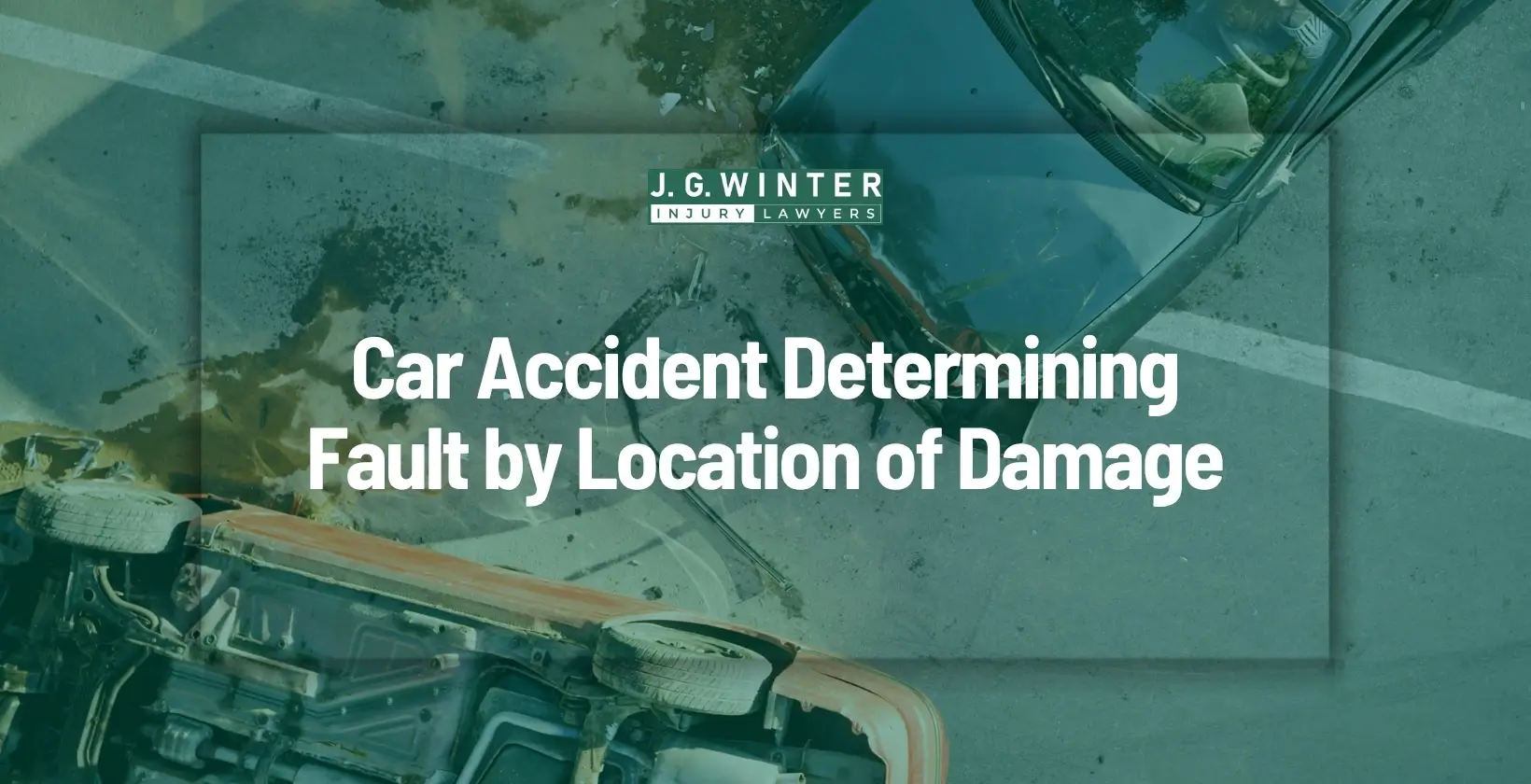Someone will always be at fault in every car accident. In most cases, the negligent driver is always responsible for any injury and death. They are responsible for death due to their carelessness.
Determining fault in a car accident depends on the state’s rules. It also relies on factors like finding the negligent driver, recorded statements like CCTV, or any other evidence that proves the fault.
Accident in at-fault state and no-fault state
Though each car accident is different, the process of determining fault in every such crash is similar. The courts handle cases as per the state law. Currently, 12 states follow no-fault insurance laws, and the remaining follow at-fault insurance laws.
In a no-fault state, both parties will pay for their medical expenses using their Personal Injury Protection (PIP) coverage. This is irrespective of who caused the accident. However, the at-fault party has to compensate the other party for the vehicle repair using the property damage liability coverage.
In an at-fault state, the insurance company of the at-fault driver will cover the medical expenses and property damage of the other party. The at-fault driver can pay for the injury from bodily injury liability, whereas for the vehicle damage, they can use property damage liability coverage.
Though the compensation rules are different, both states determine at-fault parties (the party responsible for the accident) and no-fault parties (the party that is not responsible for the accident).
At-fault state
An at-fault state is also called a tort state. In these states, the driver who caused the accident is responsible for compensating for injuries and other damages. The at-fault driver can pay the other parties directly out-of-pocket or through insurance.
In an at-fault state, a driver needs to carry a specified limit of liability coverage. These are property damage liability coverage and bodily injury liability coverage.
The property damage liability covers the other party’s vehicle damages. Likewise, bodily injury liability insurance pays the medical expenses of other parties. These coverage types will only pay up to the policy limits. In case of expenses above that, the at-fault driver has to pay out-of-pocket.
No fault state
In a no-fault state, the injured would file a claim with their insurance company to pay for related medical costs.
In these states, it is mandatory for the driver to have minimum personal injury protection coverage. This coverage comes along with the car coverages like Bodily Injury Coverage and Property Damage Coverage.
12 states follow no-fault insurance. They are Florida, Hawaii, Kansas, Kentucky, Massachusetts, Michigan, Minnesota, New Jersey, New York, North Dakota, Pennsylvania, and Utah.
Accident where you are not at -fault
If you get into a car accident and it’s not your fault, it is called no fault accident. However, how you get the compensation depends on your state’s rules.
It’s important to know that a “no-fault state” and a “no-fault accident” are not the same things. No-fault accidents can happen in both at-fault states and no-fault states.
In an at-fault state, the person responsible for the accident has to pay for your medical bills and car repairs. In some cases, your insurance can pay your medical bills initially. Later they get the reimbursement from the at-fault driver’s insurance company. This is called ‘subrogation’.
Now, in a no-fault state, your Personal Injury Protection (PIP) insurance takes care of your medical bills and those of your passengers up to the policy limit. It can also cover lost wages and even cover the cost of your replacement for tasks you are not able to do because of injuries. However, the party responsible for the accident has to pay for your car repairs.
So, when it’s a no-fault accident, it means you are not accountable for it. The compensation handling nevertheless depends upon the state’s laws. Just remember, no-fault accidents can happen in both states with at-fault insurance laws and no-fault insurance laws.
Car insurance and negligence
Your car insurance payments depend on what kind of rule the state has. Additionally, the state laws evaluation on negligence affects how claims are paid out. In circumstances where both drivers bear partial responsibility, insurance providers typically assess the degree of fault of each driver.
Negligence generally surrounds 3 primary categories. They are pure contributory, pure comparative, and modified comparative.
Pure contributory negligence
If you are partially responsible for the accident, you will not get any compensation from the other party. This happens if your state follows pure contributory negligence.
For example, if you are responsible for only 1% of the accident, you cannot proceed for compensation from the opposing party.
Pure comparative negligence
If your state follows pure comparative negligence, you can claim the percentage of fault they are responsible for.
For example, if you are responsible for 25% of the accident and the opposing driver is responsible for 75%, you can only claim 75% from the other party.
Modified comparative negligence
If your state follows modified comparative negligence, you cannot claim compensation from the other driver if you are responsible for more than 50% of the accident.
For example, you got into a car accident that caused $3000 in damage. The court determined you were 30% at fault, and the other driver was 70% at -fault. With modified comparative negligence, you can get compensation for 70% or $2100 from the other driver. But if you are responsible for more than 50%, you’ll get nothing from the other party.
How is fault determined in a car accident?
The way we determine the liable party is pretty much the same for most cases.
The states that apply ‘at-fault’ rules determine fault based on which party caused the accident. Sometimes, the at-fault party immediately admits their liability, whereas in some cases, it requires investigation.
Usually, the judiciary determines the fault based on the following considerations:
State laws
Learning your state’s traffic rules can help you determine if the other person is liable for the accident. You can check your state’s motor vehicle website, visit the local DMV (Department of Motor Vehicles), or visit your local library for information.
Police reports
When police arrive at the accident scene, they create an official report. The report includes information like a diagram of the incident and the location where the accident happened. It also includes objective analysis, the police’s opinion of the situation, and the probability of driving under the influence.
Factors that impact fault determination
The relevancy of each factor depends on the case. Nonetheless, these are the common factors that impact the overall fact-determination process:
Location of property damage on all vehicles:
Make sure to take pictures and videos of the damage to both cars after the accident. These pictures and videos will help you understand what went wrong. The kind of damage in your car also determines the at-fault party in the accident. For example: If someone hits you from behind, it’s usually their fault because they ran into you.
Recorded statements of parties involved:
Every insurance company wants to talk to the insurer before they move forward. They also ask for recorded statements like police reports, CCTV footage of the accident. This process can be complicated for you as you are already swamped due to the unfortunate incident. In such cases, it’s wiser to have an accident lawyer by your side who can guide you through all the complicated legal proceedings.
Statements of witnesses:
Witnesses can give a detailed narrative about the accident. A statement of witness can be invaluable to your claim if you were severely injured and the insurance company is denying your claim.
Photographs of the scene:
Human memory can be unreliable, so you need to have photos of the accident scene. These pictures can illustrate injuries, property and vehicle damage, and critical details relevant to your claim. The elements in the pictures can be traffic signs and the individuals present at the scene.
Conclusion
Deciding between at-fault and no-fault is a complicated procedure affected by various factors and different laws followed by different states.
If you want to learn more about fault determination and the related details, don’t hesitate to call us at 1.916.824.3606. It is a free consultation from our experienced car accident lawyers.
Frequently Asked Questions on Car Accident Faults
Does it matter whose fault it is?
Yes, it does matter because the party responsible for the accident has to bear the financial responsibility for injuries and other losses.
Is it okay to admit fault in a car accident?
Depending on the situation, admitting fault in a car accident may be necessary. Nevertheless, if you are sure you are at -fault, it is best to admit it as soon as possible. This will help to avoid any potential legal action or personal injury lawsuit against you.
Who is responsible for the accident?
The liable person is determined based on several factors like the damaged location of the vehicle, eyewitnesses, recorded statements of the driver involved, and many more.
Can both parties be at fault in a car accident?
Yes, both parties can be at fault in a car accident, but the percentage of the parties responsible for the accident differs. The court decides the percentage of the fault, and the compensation depends on the state’s laws.




